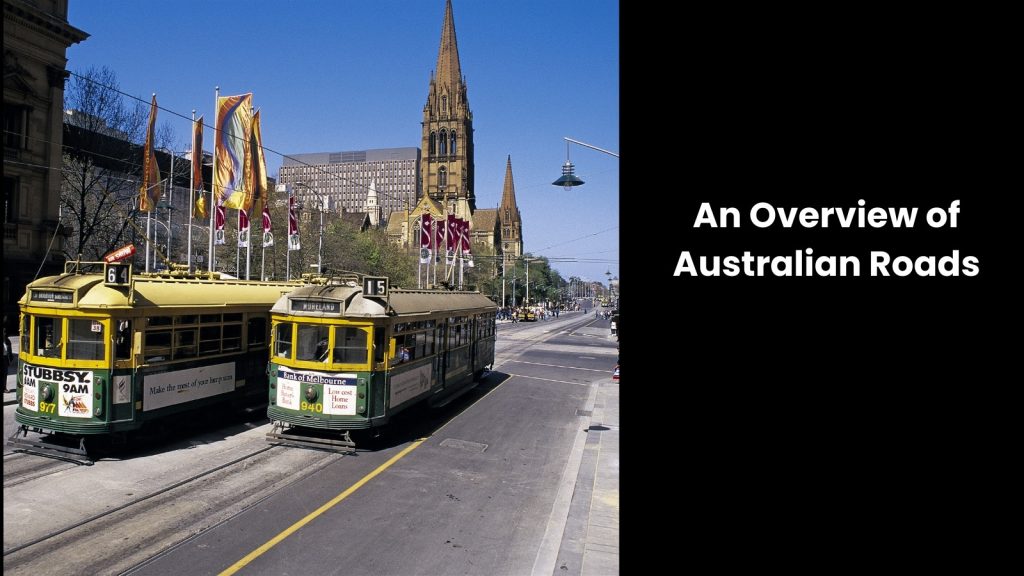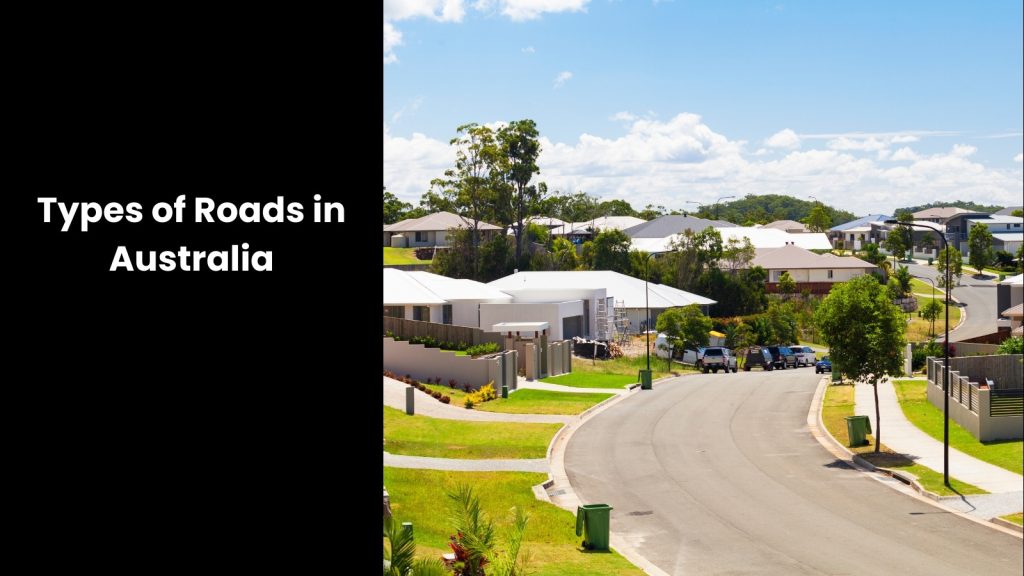If you have ever embarked on a road trip in Australia, you obviously know how amazing it can be! Australia is a road-rich country compared to the other countries in the world. Australia has huge deserts and beautiful coastlines that attract travellers. But driving here needs more than just a map and a sense of adventure. There are lots of different roads in Australia, from fast freeways to remote tracks in the outback. Each of these roads has unique objectives and distinguishing features.
That is why it is important to understand the different types of roads in Australia. In this article, we give you a clear idea of the road network in Australia.
An Overview of Australian Roads

- First, let us bring you to the stem of the road development.
- The history of road-making in Australia is a story of perseverance and progress, from the labour of convicts to today’s advanced machinery.
- Since the arrival of the First Fleet in 1788, convict-built roads like the Old Great North Road in New South Wales have laid the groundwork for future development.
- This had changed with time. In the 19th century, innovations like macadam roads improved transportation with smoother surfaces. Then, when the 20th century arrived, it brought the rise of automobiles and asphalt roads, offering durability against increasing traffic.
- You know that mechanisation was booming in the latter half of the 20th century. This truly revolutionised road construction, with machines like bulldozers and pavers streamlining the process.
- After getting developed eventually, today, Australia’s road construction blends engineering with cutting-edge technology, using computer-aided design and GPS-guided machinery to create safe and efficient transportation networks across the country.
Types of Roads in Australia

Freeways
Freeways, also known as motorways or expressways, serve as the high-speed lifelines of Australia’s extensive road network.
These expansive thoroughfares feature multiple lanes in each direction. They are divided by a central barrier to ensure smooth and efficient traffic flow. You can easily identify this as they are named with alphanumeric road numbers beginning with ‘M’ or occasionally ‘A,’
Plus, these are often displayed in gold-on-green or gold-on-blue symbols. These freeways offer controlled access with limited entry and exit points, reducing congestion and enhancing safety.
With high-speed limits usually ranging from 100 to 110 km/h, these roadways encourage rapid and convenient travel for motorists across the country. Not to mention that freeways play a crucial role in connecting cities, towns, and regions, serving as vital conduits for commerce, tourism, and everyday transportation needs.
Ramps
This is another important type of road in Australia that serves as vital entry and exit points for freeways and freeway-styled roads. The latter ensures smooth and efficient traffic flow.
These specialised connections are specifically designed to back up flawless merging and diverging, allowing motorists to enter or exit the freeway with ease. While ramps play an important role in maintaining the high-speed flow of traffic on freeways, it is also important to note that some popular navigation apps in Australia discourage using ‘Ramps’ as a standard road type for connecting roads.
However, as they can provide dedicated access points, ramps contribute to enhancing safety and convenience for drivers navigating Australia’s roadways.
Major Highways
Major highways in Australia play a ‘major’ role as the backbone of the country’s long-distance transportation network. Let us explain why.
This links major cities and regional centres across vast distances. It is easy to identify such networks as they indicate distinctive gold-on-green shields bearing the word ‘National’ at the top or alphanumeric numbering systems beginning with the letter ‘A,’.
These highways are crucial for an efficient journey and commerce within the country. Major highways are crucial routes for travel, connecting drivers travelling throughout Australia’s varied terrain. Travellers can use them for both intrastate and interstate travel.
Whether navigating bustling urban centres or remote rural regions, drivers rely on these well-defined routes to reach their destinations safely and efficiently. With their key role in connecting communities and facilitating economic growth, major highways stand out as a key player in the mobility and accessibility efforts of Australia.
Minor Highways
In Australia, minor highways, which include state highways and state roads, are essential links between states and territories. They are also important for allowing local traffic flow and connecting remote communities.
Marked by bullet signs with numbers that alternate between white and blue or gold and green and begin with the letters ‘B’ or ‘C,’ these routes are vital for both locals and visitors.
Minor roads are the backbone of Australia’s regional transport system, providing effective access to vital services and facilities whether they are flowing through its countryside or rushing through suburban districts.
As you can see, even though they are minor highways, the contribution they make to the national transportation ecosystem is not ‘minor’.
Primary Streets
These sorts of streets in Australia serve as the backbone of urban and suburban areas. It connects neighbourhoods, suburbs, and towns while providing essential access to services and amenities.
These vital roads, known by various designations such as main roads, regional roads, tourist drives, or scenic drives, play a crucial role in letting local traffic flow and supporting community connectivity. The designation of primary streets can vary depending on the state or territory.
When it comes to the Australian road network, primary streets serve as lifelines for residents and visitors alike to reach their final destinations.
Streets
Streets are located throughout cities and the countryside across Australia, and they serve as vital paths for transportation. They include all roads that are not freeways, major highways, minor highways, or primary streets.
Just like primary streets, normal streets play a key role in connecting neighbourhoods, allowing people to travel locally and reach different places. Australian authorities usually label uncertain roads as ‘Street’ as this helps with navigation and mapping.
As this connects people, streets are essential for Australia’s extensive road network.
Special-Purpose Roads
While the roads we mentioned above are the majority of Australian roads, However, there are specialised road types catering to specific purposes in Australia.
Private Roads
These roads are not intended for traffic and are typically found within private property developments.
Parking Lot Roads
These are designed for accessing businesses or other facilities, and the main characteristic of this is that parking lot roads navigate within parking areas.
Off-Road
This classification applies to fire trails and 4WD tracks unsuitable for standard vehicles. As we see, these roads are usually marked with the ‘unpaved’ flag alongside another road type designation like ‘Private’ or ‘Street’.
Narrow Passageway
This rarely used classification signifies a particularly narrow road where oncoming vehicles might face difficulty navigating the road.
Ensure the Roads are Safe via New Technology

As you can see, there are many types of roads in Australia, and some of them are governed and maintained by the central government, while others are under the control of state governments. Since there is a complex road network in the country, the authorities should take care of it by maintaining and fulfilling the necessary renovations as soon as possible. It is true that this is not a task that is possible without a proper system. This is why the authorities should opt for modern road asset management technologies for better results.







